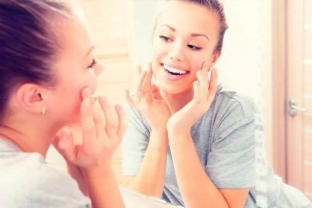Morphological changes in the dermis and epidermis begin to occur in people already at the age of 25-30, although the start of aging processes is highly dependent on the genetic characteristics of a particular organism. However, excessive insolation can significantly accelerate the manifestation of age-related changes, and even genetic determinism will not save from the manifestation of signs of photoaging. To prevent premature aging of the skin from the harmful effects of ultraviolet radiation, a preventive course of redermalization procedures from Hyalual will help, read more about it on estet-portal.com.
Causes and factors of premature skin aging
The youthful appearance of a person largely depends on the condition of his skin, and we are talking not only about the level of grooming, but also about the health of the skin in general. Age-related changes that affect the appearance of the skin – it is a multifactorial process in which the following play a role:
- the genetic characteristics of a particular organism (sometimes, for example, people from generation to generation have early "crow's feet" in the corners of the eyes);
- hormonal fluctuations;
- comorbidities.
External causes can also accelerate chronoaging – such as stress, eating disorders and drinking regimen, smoking and other bad habits. But the strongest negative effect on the skin is exerted by excessive insolation, which causes such significant changes at the cellular level of the skin that these processes have become characterized as photoaging.
Primary signs of photodamage usually appear on exposed skin areas that are most affected by excessive sun exposure – face, neck and décolleté, forearms and hands. At the same time, negative changes affect all layers of the skin, manifesting signs characteristic of photoaging.
- Xerosis of the skin. We are talking about abnormal dryness of the skin. Under the action of solar ultraviolet, the functioning of the sebaceous glands is disrupted and the hydrolipid balance of the stratum corneum of the skin suffers, which leads to a violation of the integrity of this barrier level. The disturbed stratum corneum causes increased transdermal moisture loss. At the same time, the basement membrane thickens, as keratinocytes, which are responsible for the resistance of the skin to ultraviolet radiation, begin to divide intensively.
- Pigmentation disorder. In response to solar radiation, melanocytes of the basal layer of the epidermis begin to intensively synthesize melanin, which is redistributed towards the stratum corneum, while the tyrosinase enzyme is activated, and the pigment is distributed unevenly, forming hyper- and hypopigmented spots on the skin.
- Violation of the extracellular matrix. Excessive insolation triggers the processes of the so-called solar elastosis, when the elastin fibers are fragmented, twisted and compacted. Collagen fibers are replaced by structures with damaged areas. All these processes cause flabbiness and wrinkling of the skin.
In addition to the listed factors that cause early photoaging of the skin, it is worth noting the appearance of spider veins due to persistent vasodilation under the influence of high temperatures, the deterioration of skin immunity due to the destruction of Langerhans cells by UV rays, and the activation of free radicals. Photoaging can be prevented by conducting a warning course for the skin, if it faces a confrontation with the active sun.

Preventive measures against premature skin aging
To ensure that your skin continues to shine with youth and freshness after a holiday spent in the hot sun, it is recommended to take protective measures before the body is exposed to active ultraviolet radiation. Such protection must necessarily be comprehensive.
Food. A rational approach to the composition of the diet will significantly strengthen the protective capabilities of the skin if the daily menu contains foods rich in vitamins C and E, selenium and other antioxidants (apples, currants, nuts, olive oil, avocados, fatty fish, broccoli, tomatoes).
In conditions of active sun, the key to protecting the skin from the harmful effects of ultraviolet rays is the observance of the drinking regime – at least 2 liters of clean water per day, preferably in the morning
Use of sunscreen. The use of cosmetics with a high sun protection factor, which has both physical and chemical filters, will help to a large extent to prevent the risks of hyperpigmentation. Creams with an SPF of at least 50 should be applied 30 minutes before the expected exposure to the active sun. But it is undesirable to take a shower before going out into the sun, because water will wash away the natural lipid layer of the skin and deprive it of its natural protection. It must be remembered that the skin of the lips also needs protection from the sun. Clothing made from natural fabrics and wide-brimmed hats will well protect against photoaging.
An effective means of preventing photoaging processes will be a course of redermalization procedures with Hyalual preparations, during which the synthesis of structural proteins of the extracellular matrix is enhanced and the physiological hydro-reserve of the skin is strengthened
Hyalual redermalization preparations contain a unique combination of hyaluronic acid and sodium succinate, which triggers regenerative processes in the dermis, stimulating the skin to protect itself from aggressive sun exposure. Thanks to the synergy of two acids – hyaluronic and amber, redermalization with Hyalual preparations strengthens the dermal framework, renews the energy reserves of cells, and prevents the destructive action of free radicals.
To protect the skin from premature aging, it is recommended to carry out 1 session of redermalization 2-3 weeks before the proposed trip to places of active sun and then – 2 sessions after returning with an interval of 2-3 weeks. For the procedure, Hyalual preparations are used with a concentration of 0.55, 0.9 or 1.1%
 Salon procedures with drugs that stimulate the synthesis of collagen and elastin, home care with cosmetics containing vitamins C and E will help to consolidate the effect of redermalization.
Salon procedures with drugs that stimulate the synthesis of collagen and elastin, home care with cosmetics containing vitamins C and E will help to consolidate the effect of redermalization.
The material was written on the recommendations of the highest category dermatovenerologist, candidate of medical sciences, Honored Doctor of Ukraine Irina Medvedeva.






Add a comment